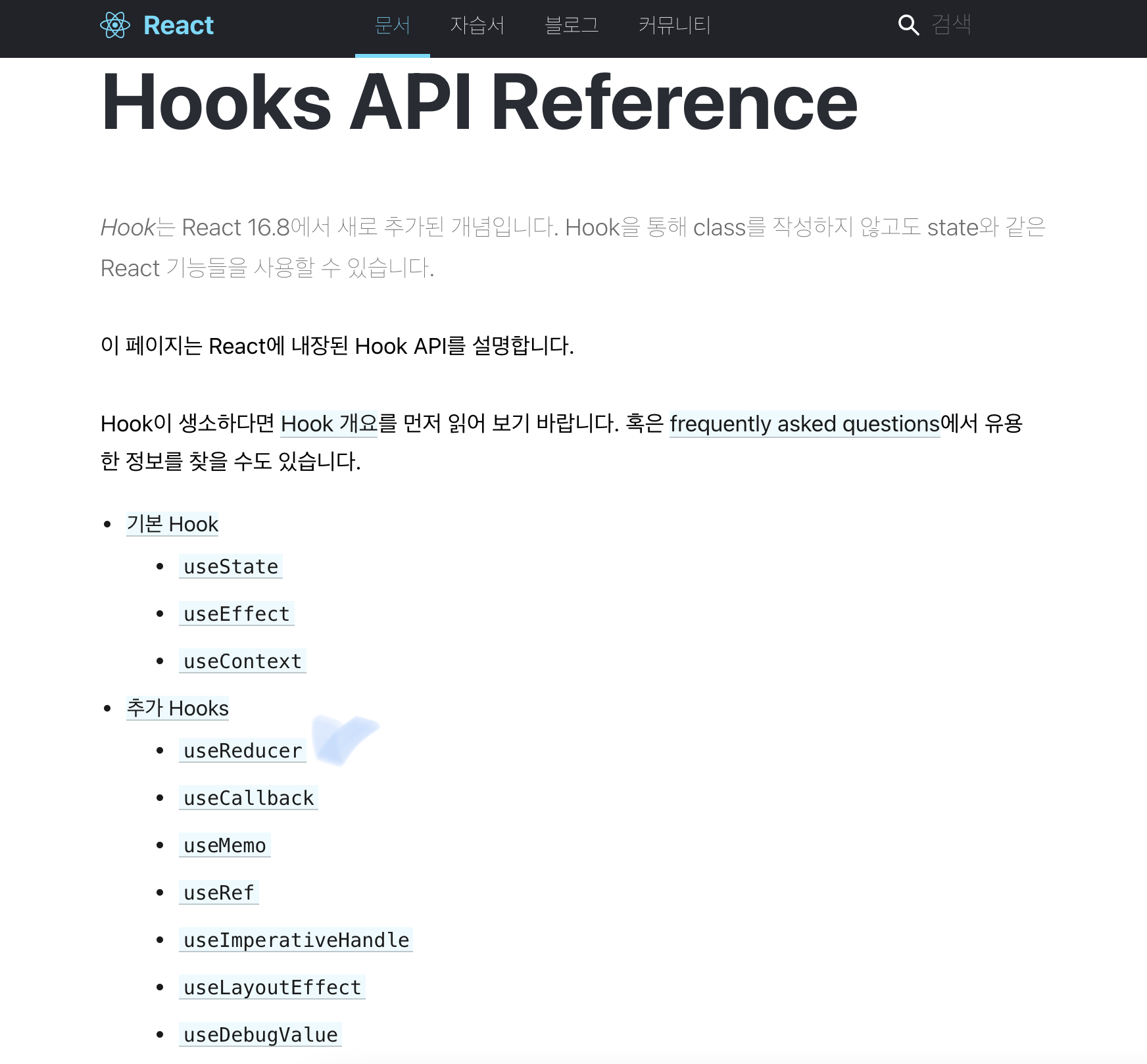
컴포넌트의 상태값을 리덕스처럼 관리하기: useReducer
useReducer 란?
useReducer를 사용하면 컴포넌트의 상태값을 리덕스의 리듀서처럼 관리할 수 있다.
useReducer 사용 예시
import React, { useReducer } from 'react';
const INITIAL_STATE = { name: 'yr', age: 0 }; // (1)
const reducer = ( state, action ) => {
switch ( action.type ) { // (2)
case 'setName':
return { ...state, name: action.name };
case 'setAge':
return { ...state, age: action.age };
default:
return state;
};
};
const Profile = () => {
// (3)
const [state, dispatch] = useReducer( reducer, INITIAL_STATE );
return (
<div>
<p>{`name is ${state.name}`}</p>
<p>{`age is ${state.age}`}</p>
<input
type = 'text'
value = {state.name}
onChange = {(e) => // (4)
dispatch({ type: 'setName', name: e.currentTarger.value })
}
/>
<input
type = 'text'
value = {state.age}
onChange = {(e) => // (4)
dispatch({ type: 'setAge', age: e.currentTarger.value })
}
/>
</div>
);
};(1) 초기값 선언
- 초기값 선언
(2) 리듀서 함수 작성
- state, action 의 값을 받아서
- action.type 에 따라 처리해야 할 로직을 구현
- 로직 구현 시 state 값이 어떻게 변경되어야 하는지 작성
(3) useReducer 선언
useReducer를 선언할 때엔 매개변수로 두 개의 인자를 받는데,- (2)에서 작성한 리듀서 함수와 (1)의 초기 상태값을 입력
(4) 상태값을 변경하는 dispatch 함수 사용
- state 값을 변경할 때엔 리덕스의
dispatch함수와 같은 방식으로 사용하여 처리
트리의 깊은 곳으로 이벤트 처리 함수 전달하기
보통 상위 컴포넌트에서 다수의 상태값을 관리한다.
이때 자식 컴포넌트로부터 발생한 이벤트에서 상위 컴포넌트의 상태값을 변경해야 하는 경우가 많은데, 이를 위해 상위 컴포넌트에서 트리의 깊은 곳까지 이벤트 처리 함수를 전달한다.
이 작업은 번거롭고, 코드의 가독성이 떨어진다.... 🥲🥲
✔️ useReducer 와 Context API 사용하여 구현
useReducer 와 Context API 사용하면 쉽게 구현할 수 있다
useReducer: 상태값 관리Context API:Provider로 전달
// ...
export const ProfileDispatch = React.createContext(null); // (1)
// ...
const Profile = () => {
const [state, dispatch] = useReducer( reducer, INITIAL_STATE );
return (
<div>
// ...
<ProfileDispatch.Provider value = {dispatch}> // (2)
<SomeComponent />
</ProfileDispatch.Provider>
</div>
)
};
(1) Context 객체 생성
dispatch를 전달하는Context 객체생성
(2) Provider 를 통해 전달
Provider를 통해dispatch를 전달
